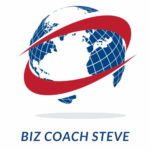Justifiable
By Steve Feld|2022-12-26T18:32:55-07:00November 26, 2022|Categories: Business, Coaching, Entrepreneur, Leadership, Sales|Tags: Business, Change, entreprenuer, Growth, Leadership, Owner, sales, success|
5 mistakes to avoid on LinkedIn
By Steve Feld|2022-12-26T18:29:36-07:00November 12, 2022|Categories: Business, Coaching, Entrepreneur, Leadership, Sales|Tags: Business, Change, Coaching, entreprenuer, Leadership, Owner, sales, success|
Do you shelve Knowledge?
By Steve Feld|2022-12-26T18:16:06-07:00October 29, 2022|Categories: Business, Coaching, Entrepreneur, Leadership, Sales|Tags: Business, Coaching, entreprenuer, Growth, Leadership, Owner, sales, Start up, success|
Are you a good Negotiator?
By Steve Feld|2022-11-06T17:27:41-07:00September 22, 2022|Categories: Business, Entrepreneur, Leadership|Tags: Business, entreprenuer, Growth, Leadership, Owner, sales, success|
Develop a vision for your future
By Steve Feld|2021-08-06T21:19:29-07:00August 7, 2021|Categories: Business, Coaching, Entrepreneur, Leadership|Tags: Business, Change, Coaching, entreprenuer, Growth, Owner, sales, Start up|
Speed Networking
By Steve Feld|2021-07-18T22:36:42-07:00July 31, 2021|Categories: Business, Entrepreneur, Leadership, Sales|Tags: Business, Change, entreprenuer, Growth, Owner, sales, Start up|
Do you have scarcity in your business?
By Steve Feld|2021-07-18T22:32:35-07:00July 15, 2021|Categories: Business, Entrepreneur, Sales|Tags: Business, entreprenuer, Owner, sales|
5 Business Growth Traps
By Steve Feld|2021-05-13T18:24:25-07:00May 31, 2021|Categories: Business, Coaching, Entrepreneur, Leadership|Tags: Business, entreprenuer, sales|
Understanding Your Target Market
By Steve Feld|2021-04-28T20:47:21-07:00April 30, 2021|Categories: Business, Entrepreneur, Sales|Tags: Business, entreprenuer, sales|
The 5 Non-Negotiable Disciplines Of a High Achiever
By bizcoachsteve|2021-04-05T13:52:24-07:00September 15, 2020|Categories: Business, Coaching, Entrepreneur, Leadership|Tags: entreprenuer, sales|











